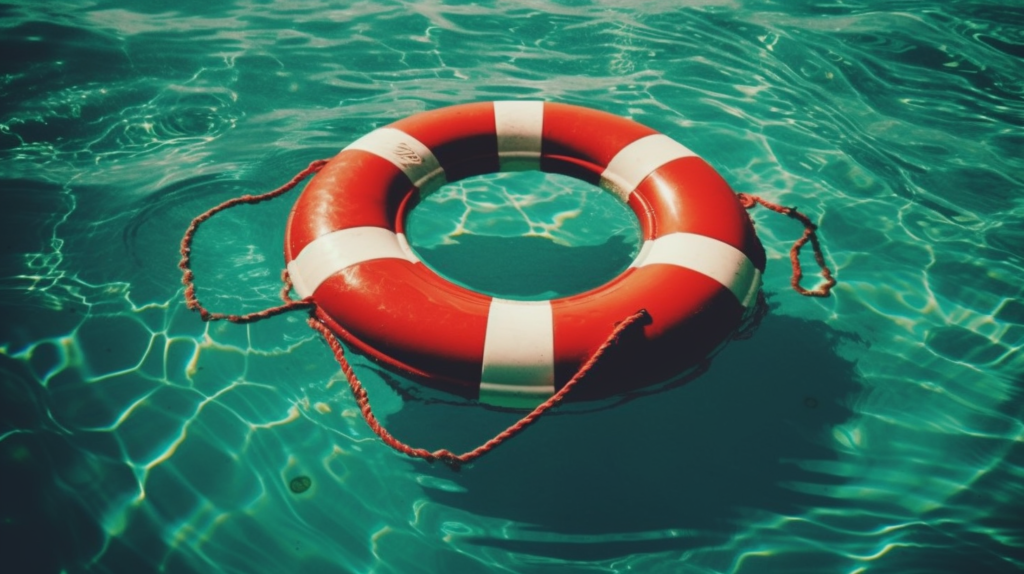Money is an essential factor in our everyday life, but it’s one of the most stressful topics for many of us. No matter how much money we have available, there’s always a certain amount of fear and anxiety associated with juggling finances and budgeting. To make financial life a bit easier and help reduce money-related worries, it is paramount to build a financial safety net – and an emergency fund is key to developing one!
1. Establishing a Solid Foundation for Financial Security
- Understand Risk – Before you begin climbing up the financial ladder, it is essential to understand your risk tolerance. Knowing what areas of life you’re willing to take risks in should be thoroughly discussed and explored. Taking risks can lead to massive rewards, but too much can be disastrous. Make sure you’re educating yourself when it comes to investing.
- Create a Budget – Before you dive into the financial world, take the time to sit down and create a budget. This document is incredibly important for monitoring how much you’re spending each month. Once you have a general idea of how much is going in and out each month, you will be in a much better position to spend and save wisely.
- Understand Insurance – No financial plan can be truly complete without taking into account insurance and protections. Getting insured properly can greatly reduce the risk of yourself and your investments. Take the time to understand the different types of insurance that fit within your budget and current lifestyle.
Setting a solid foundation for financial security requires knowledge and understanding of risk, budgeting, and insurance. When it comes to understanding risk, it’s important to know your personal risk tolerance. Each individual is different when it comes to how risk-averse they are and how involved in the financial world they want to be. This should be explored thoroughly before any investing is done.
Creating a budget is the next step for any financial plan. Decide on how much of your income will be saved and how much will go out each month. Having a budget allows you to be aware of spending and saving, and money-saving tactics can also be conveniently implemented.
Insurance should also be taken into account when it comes to establishing a secure financial future. Insurance can offer great protection, as well as put the mind at ease concerning future risks. Find the right plan for the budget and lifestyle, and make sure it’s maintained to get the most out of it.

2. Why an Emergency Fund is Essential to Your Financial Health
When it comes to building your financial future, setting aside savings for an emergency fund should be at the top of your list. Financial security means having a cushion to fall back on, and you can’t predict when unexpected costs may arise. An emergency fund is a financial safety net that can protect you and your family from the effects of a financial emergency. Here’s why it is essential to your financial health.
It Helps Provide Peace of Mind
One of the main reasons to start an emergency fund is to ensure that you are prepared in case an unexpected event occurs. Whether it is a job loss, medical emergency, or sudden repair, an emergency fund can help provide you with the support and security you need. With this fund, you can rest assured that your family’s financial needs are being met even when times are tough.
It Keeps You Out of Debt
Having an emergency fund can keep you out of debt. Unexpected events happen all the time, and if you don’t have the money to pay for them, it is all too easy to turn to credit cards or loans. But this is an expensive and unsustainable route to take. Instead, by having money in savings, you can avoid going into debt when it really matters.
It Provides Financial Options
An emergency fund does much more than just protect you from financial disasters. You can also use it for big purchases, such as a car or a home. Or, you can put it towards a family vacation or education expenses. Having an emergency fund gives you the flexibility to make decisions that are best for you and your family financially.
An emergency fund is essential to your financial health. It not only provides peace of mind by safeguarding you from financial disasters, it can also help you avoid costly debt and provide options for major purchases. Start building your fund now so you are fully prepared in the event of an emergency.
3. Calculating How Much of an Emergency Fund You Should Have
Having an emergency fund is an integral part of a financial plan. But have you ever wondered how much money should be in it? If you need this money, you definitely don’t want it to be too little. However, it also shouldn’t be too large, so you don’t keep your money unnecessarily idle. Here are three approaches to help you calculate what the ideal emergency fund is for you.
- Earlier expenses: Go back at least 3 to 6 months in your expenses. How much was the average monthly expense? If you are expecting everything to stay as it was, you should consider this amount of money for your emergency fund.
- Essential expenses: Think about your necessary expenses, such as rent, food, medical expenses, etc. Calculate the entire amount and then multiply it by 3. That should be the exact quantity of money required in an emergency fund.
- Financial advisor: If you are still confused, then it is best for you to consult a professional financial advisor. They are the right people to guide you in such matters and can provide you with the right amount for your emergency fund depending on the situation.
To put it simply, the amount of money that should be in your emergency fund depends on your individual situation. So, make sure you think things through and put the right amount in this backup fund. Additionally, it might be beneficial to review your emergency fund at least once a year, as your financial situation can possibly change.

4. Locating the Right Savings Options for Your Emergency Fund
Having an emergency fund is a great way to stash away money for unexpected events. It can provide a cushion against job loss, health expenses, or any other kind of financial crisis. But building an emergency fund isn’t always easy. Finding the right savings options for your needs can take patience and effort.
A few of the most popular choices to save for an emergency fund include:
- High-yield savings accounts, which offer a higher rate of dividends than other savings vehicles while still providing access to your money.
- Certificates of deposits, which may offer a higher rate of return than other savings vehicles with the trade-off that you cannot access your money for a specified period of time.
- Money market accounts, which often come with higher interest rates and more flexibility than traditional savings accounts.
It’s important to weigh the pros and cons of different savings options such as these to ensure that you’re getting the most bang for your buck. For example, if you only plan to maintain your emergency fund for a few months then a high-yield savings account may be the best choice. But if you intend to keep the money growing long-term, then a certificate of deposit may offer better returns.
5. Growing Your Emergency Fund through Discipline and Patience
Emergency funds are an integral part of financial planning, helping tide individuals and families through unexpected financial crises. Despite the importance of an emergency fund, many people struggle to build it up because of discipline and patience issues. If you’re having trouble growing your emergency fund, here are five tips for building it up.
One tried and true way of growing your emergency fund is to set aside a certain percentage of your paycheck for it using automatic transfers. Even if you can save only small amounts, the habitual nature of a regular transfer builds discipline and ensures you have a cushioned backup should disaster arise. Those with variable incomes can save a fixed percentage of their income each month, regardless of any fluctuations.
You can also build up your emergency fund by everyday frugality. Applying simple money-saving methods, like carpooling and cutting down on unnecessary expenditures, prevents money from being wasted and directs it into your emergency fund
- Have a goal in mind – When planning for emergencies, it’s important to have a specific goal. Consider the amount that you need to have saved, and this can provide the motivation to help you stay disciplined.
- Seek help – If you’re feeling overwhelmed about building your emergency fund, speaking with a financial planner can provide expert guidance and personalised advice.
- Incentivise yourself – No one has unlimited patience, so it’s important to incentivise yourself to sit down and get organised. Create goals and give yourself rewards for reaching them.
By applying these tips, it’s possible to build your emergency fund in a disciplined and efficient manner. With the right planning, you can ensure that you have all the resources you need in times of emergency.

6. Making Your Emergency Fund Work for You in the Long Term
We can all agree that saving a sizable emergency fund should be a top financial priority. But once your nest egg is built, you should consider ways to keep it working for you. Here are six strategies to make your emergency fund productive in the long term.
1. Invest in Money Market Accounts. Money market accounts offer competitive interest rates with FDIC insurance. However, balances tend to remain static because withdrawals are limited to six per month, making such accounts an ideal way to earn a modest return while keeping your money safe.
2. Take Advantage of Tax-Free Savings. Individual Retirement Accounts (IRAs) and Health Savings Accounts (HSAs) are two ways to earn tax-free interest on emergency funds. Both provide predictability and should be a part of most retirement and health strategies. Also, if your employer offers a 401(k) match for your contribution, consider allocating a portion of your emergency fund to take full advantage of the benefit.
3. Leverage Low-Risk Securities. Consider safer investments like certificates of deposit or bonds to keep your emergency fund growing with minimal risk. While most investments require a lengthy lock-in period, some banks offer no-penalty CDs that allow holders to choose an array of flexible terms. When picking investments, be sure to research and compare the interest rates of different banks to find the best deal.
7. Adapting Your Emergency Fund as Life Changes
Life is ever-evolving, and your emergency fund should be able to adapt and grow with you. As your income and financial situation change, you may need to adjust the amount you’re saving or switch from one type of account to another. Here are 7 key steps to follow:
- Revisit your emergency fund every 6 to 12 months. You’ll want to determine if your financial situation has altered since you initially put together your fund, and if the amount you’ve saved is still appropriate.
- Make sure your fund is tailored to your needs and accessible. Your emergency fund can be kept as cash, in savings, or combined with short-term investments.
- Review how inflation is affecting your fund. Keep in mind that the amount in your fund may not purchase as much in the future due to inflation.
- Take stock of any changing expenses. Make sure you’re aware of any changes in costs that may be specific to you, such as a childcare expense or medical bills.
- Factor in any upcoming costs. From car repairs to job relocations, having money set aside can help you keep up with the future expense.
- Keep your emergency fund liquid. This means making sure that the money is easily accessible in case a real emergency strikes. This may require different types of accounts, such as liquid savings accounts and certificates of deposit.
- Consider where you can find extra funds. If you need quick cash, investigate strategies such as selling unwanted items or taking on freelance work while you assess your options.
Adapting your emergency fund can help ensure you’re covered for the unexpected. Talk to a financial advisor if you have any questions about your fund and how best to structure it.

8. Reaping the Rewards of Building a Financial Safety Net
- No feeling beats the security that comes with having a financial safety net. Once you’ve amassed enough money to provide for your basic needs, you can now focus on investing in areas of your life that really matter to you.
Having a cushion of money is a great way to start turning your dreams into plans. You can take financial risks like starting a business, investing in the stock market or expanding your property portfolio. As your net worth increases, your financial freedom and security improves along with it.
Setting aside money also helps with retirement. You can save enough for a secure future and not have to rely on the government or a job. Plus, approaching retirement with a solid financial safety net will give you the peace of mind to enjoy your golden years with financial security.
- Achieving financial safety can also lead to more immediate rewards. You can take a holiday, pay for your child’s education or buy a new car with cash. Moreover, setting a financial goal gives you something achievable to work towards which in turn can be incredibly motivating.
If you’ve been searching for a financial safety net, why not try creating an emergency fund? It may take time to build, but it could be the key to having peace of mind in the future. So, what are you waiting for? Get started today – it’s never too late to take the steps to safeguard your financial future.
